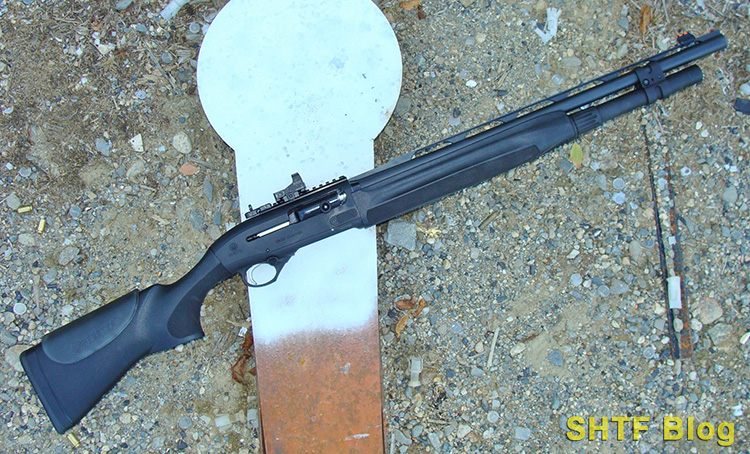
Debating whether to “pull the trigger” on shotgun red dots? There are plenty of reasons it’s a good idea. Let’s dig into the subject.
Growing Interest in Red Dot Sights
Dot sight sales are through the roof, driven largely by the recent wave of optics-ready handguns and miniaturized red dot sights (MRDS). Because of their tubeless construction, we refer to these small optical sights as “open-emitter” designs. The AR-15 is another hugely popular dot-sight platform, many of which utilize larger “closed-emitter” (tubular) dot-sights – like Aimpoints.
Shotguns have remained on the sidelines, although the latest unorthodox tactical designs have spurred new interest in dot sights. Kel-Tec’s KSG and S&W’s M&P 12 are two examples of this genre. Because both are as optics-friendly as any AR, they lend themselves to the full gamut of dot-sight choices. By comparison, sporting gun options are more limited.
Before we get started, it’s worth noting that not all “red dot sights” incorporate red aiming points (reticles). Some are green, or red/green selectable, with reticles of various patterns. Next up, the design of the sight, and its mounting system: Sporting guns have stocks configured to place the shooter’s eye directly above the barrel so, as a general rule of thumb, the lower the height of the dot the better. New tactical shotguns like the KSG employ straight-line stocks that can handle taller or larger sights.
The KSG and S&W enjoy brisk sales but, overall, the shotgun market is still driven by hunters and claybird shooters. Because millions are on hand in households as well, sporting guns make a good starting point for red dot sights.
Sporting Shotguns and Dots
A few years ago I was invited to hunt a small local farm full of deer. The only kicker: it was located in a shotgun-only area. Lacking a dedicated slug gun, the expedient solution was a 12 Gauge Beretta Model 1301 Competition autoloading shotgun.
Although marketed primarily for combat-type shoots like 3-Gun, it was already sitting in my safe. Its 24-inch barrel had a ventilated rib with a mid-bead, but its receiver was factory drilled and tapped. A quick call to Beretta produced a one-piece Picatinny rail which was easily installed with a screwdriver. Rather than go with a scope, I mounted an MRDS; a Burris FastFire III.
Burris FastFire III Links for Price Comparison:
MRDS/Open Emitter Example
Thanks to a previous trial at 40 yards with Winchester’s plain Super-X 2 ¾” 1-oz. slugs (using the barrel’s two beads), I knew the Beretta had potential. I was hoping the precision of the Burris’s 3-MOA dot would extend useful accuracy to around 100 yards so, out to the range I went with a few more boxes of slugs.
The zero process was easy using the sight’s 1-MOA click adjustments and accuracy proved more than adequate. But, one gripe was the additional height of the new Burris Fast-Fire sighting system. It was lower than a scope, but I’ve always been fussy about solid cheek-welds.
A second call to Beretta produced a gel-type cheek-pad with an adhesive backer. The final Burris/1301 system was still trimmer than any scoped alternatives – and hopefully more resistant to recoil-induced slippage.
As for the small Burris sight, I’ve had good results with three Fast-Fire evolutions; FF-I, FF-II, and FF-III. The latter is a better design because its CR-1632 battery loads from the top. This eliminates concerns over zero shifts common to bottom-loading types. It’s also waterproof, a big plus in rain or snow.
A push-pad offers three brightness levels in addition to an auto-adjust setting. Battery life is rated at 5,000 hours and the sight’s auto-shut-off feature helps conserve power. Like other MRDS sights, the Fast-Fire is also small and light at 1.5 ounces.

Although my final shotgun/red-dot system had promise, that year’s tag was filled before I ever got a chance to try it on deer. A few months later though, spring turkey season commenced. Things went well enough that I stuck with this combination – at least, for a while.
Between several more spring and fall seasons, it accounted for a pile of turkeys, all laid low by hard-kicking 3-inch magnums. Then, during one fall hunt, I detected a slight rattle. Surprise. The Picatinny base was loose despite the use of blue thread sealant. Another aggravation; the gel-pad needed regular attention to keep from curling off the surface of the synthetic stock. In the end, I wound up restoring the 1301 to its original configuration so it could double-duty as a backup field gun.
As most wing-shooters know, aerial targets are hit through pointing rather than deliberate aiming. Before removing the dot I did give it a try on claybirds, but the outcome was pretty much the same as previous efforts with other dots – not nearly as effective as a standard barrel, and a whole lot less intuitive. This accounts for the scarcity of dot-sights on regulation skeet and trap fields.
That said, some shooters do use dot-sights with success on airborne targets. I’ve witnessed this firsthand through my son. Although his Benelli M-4 Tactical 12 Ga. shotgun is an unconventional choice, it tumbles crows with authority. It’s also far from a traditional turkey gun.
Nevertheless, it’s pistol-grip improves control when shooting from contorted positions. The 3-MOA Burris FF-III mounted to the gun’s receiver also helps center dense patterns thrown by tight turkey chokes. A switch to a rifled choke-tube and slugs transforms the Benelli into a deer gun. These loads all generate plenty of recoil, but the Burris continues to function reliably atop the Benelli’s solid Picatinny rail.

For sporting purposes, a dot-sight is probably at its best for turkeys or deer. But, since some wing-shooters also use dots, one MRDS that could cover everything is the Burris SpeedBead. It’s essentially a FF-III mounted atop a vertical plate, sandwiched between a receiver and butt stock. The Speed Bead is sold to fit several popular shotguns, but installation requires removal of the stock.
Burris SpeedBead Links for Price Comparison:
Defensive Shotguns
For many years I was Officer in Charge of a busy government firearms operation and one particularly interesting facet was our high-speed shotgun program with reactive and moving targets, similar to popular 3-gun events. Non-stop ranges provided ample opportunity to play with a progression of defensive shotguns – everything from stubby Model 870 pumps to dual magazine KSGs and highly abbreviated Shockwaves.
Needs Assessment First
The cool-factor is alive and well but we should separate tacticool from reality. Just my two cents: I much prefer a standard shotgun capable of providing a solid gun mount to the latest tactical bananas (validated through shot-timers and tons of shells). After experimenting with a number of shotguns, our mainstay LE inventory evolved to 21” rifle-sighted M-870 police guns with extended magazines and side-saddle shell holders.
Although heavy when fully loaded the extra weight tamed recoil, and the sights permitted useful WW slug accuracy out to at least 75 yards. No worries about dead batteries or damaged optics either. Some optical combinations result in guns as heavy, or heavier, than our battle-scarred Remingtons.

To gain a more compact shotgun, we fielded some customized M-870s with 14” barrels and sturdy ghost-ring night-sights. Wilson Combat/Scattergun Technologies did the modifications, which transformed them into in failsafe close-quarter weapons. Of course, at that point they became NFA shotguns.
The Shockwaves provide an end-around to that process, but I’d rather go the KISS route via an 18” version with a butt-stock – like Remington’s M-870 Express Tactical pump.
Closed-Emitter Dots
Given the straight-line configuration of Kel-Tec’s KSG and S&W’s M&P 12, tall sights are a necessity, making a dot-sight the perfect choice. And, because height is less of a concern, a closed emitter (tube) design will work well. Several years ago we (my agency) procured a bunch of KSGs for use with less-lethal munitions.
We mounted 30mm Aimpoint Pros because of their proven reliability on our AR-15 carbines, staff familiarity, and logistics. The 2 MOA dot works well on either platform and battery life is near-eternal.
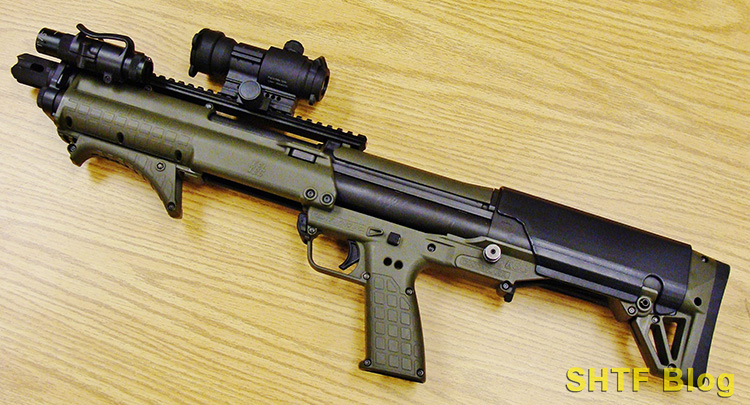
Other good but pricier picks include several smaller Aimpoint models. One advantage of a closed-emitter design is its ability to accept lens caps. Most also facilitate easy battery exchanges. The MRDS units are viable alternatives, but some must be dismounted, resulting in the need for re-zeroing – a hassle given the expense (and scarcity) of ammunition.
Possibilities
Like scopes, dot sights can be useful for shotguns, with the added advantage of unlimited eye relief. Shoot with both eyes open and field of view becomes a non-issue. From a sporting perspective they can be a good choice for niche roles (such as those mentioned above).
I mounted an MRDS to the receiver of my autoloading Beretta, but the better (although more costly option) might’ve been an Aimpoint Micro S-1. This small closed-emitter dot-sight is designed to lock on a ventilated rib. Seasonal installation is one possibility. Another is a separate pre-zeroed barrel.
Or (as mentioned in my previous shotgun scopes for deer hunting post), some pumps and autoloaders can be fitted with cantilever barrels; those with bases that extend rearward over their receivers. Because they’re designed to accept optics, numerous options become possible.
Dot Options
Of course, the optics market is now saturated with dot-sights – far too many to list here. Thus, I went with personal experience.
All of our agency’s Aimpoint Pros (lots of ‘em) are still going strong despite years of tough use.
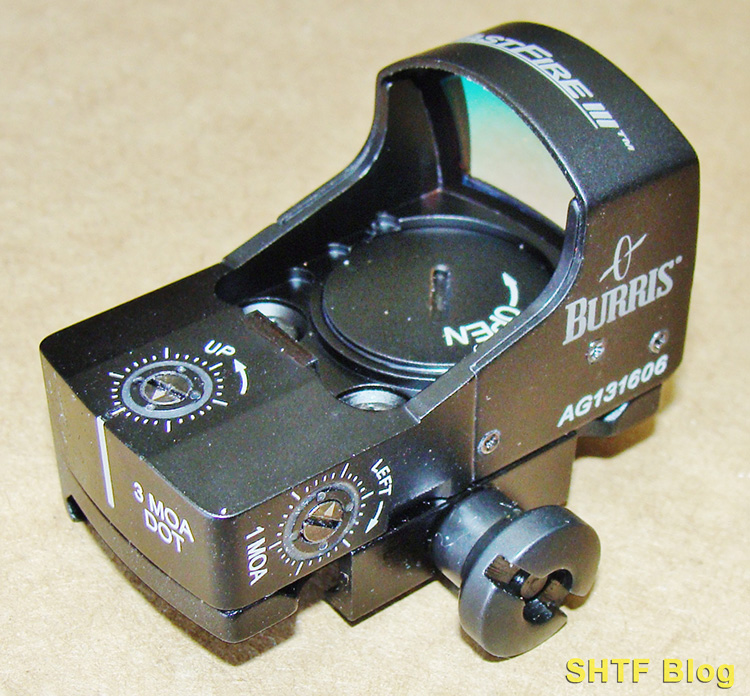
As for my Burris FastFire III (now sold as a FF-3), it still works fine on an S&W .44 Magnum Model 629 revolver – a good enough testament for me (ditto for my older FF-I & FF-II versions). The FF-III is now listed as a FastFire 3, and it’s been joined by an FF-4.
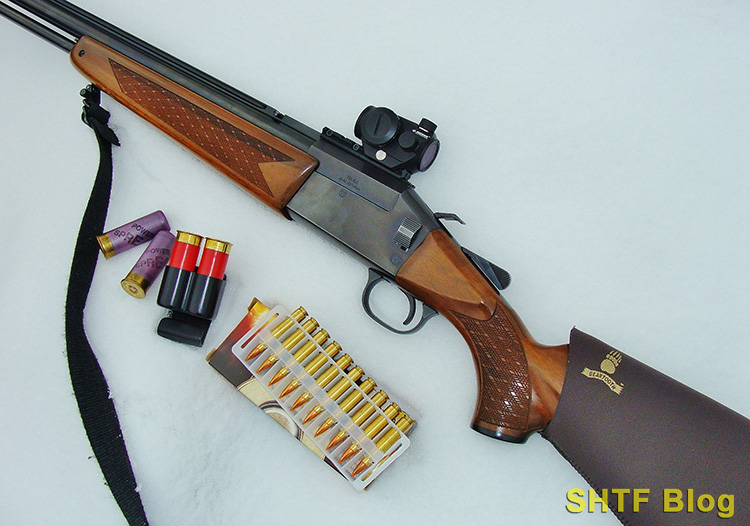
The only dot sight presently earmarked for shotgun use is a relatively inexpensive 1st-gen Konus Atomic. This tiny closed-emitter sight endures without issues on a European 12 Ga./.223 combination gun.
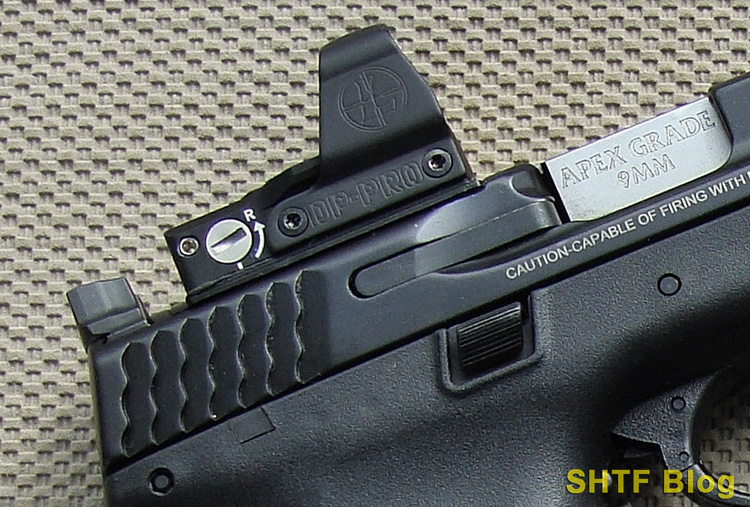
I have no doubt the Leupold Delta-Point Pro currently residing on a 9mm S&W M&P pistol would handle anything a shotgun could deliver.
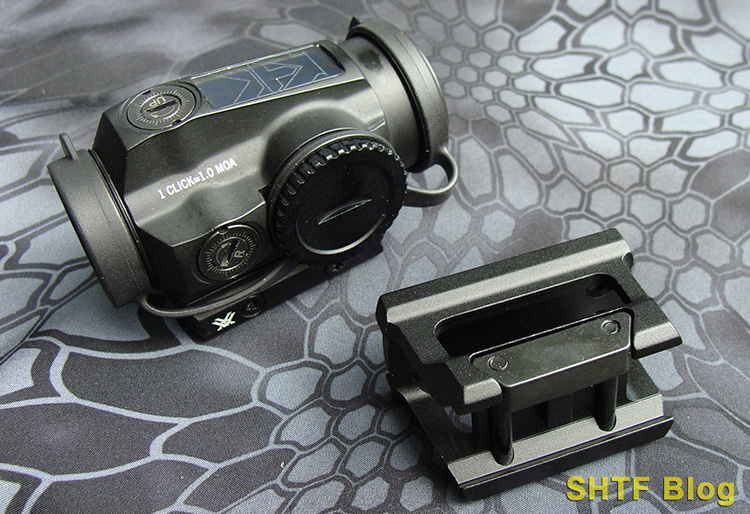
One dot sight I haven’t yet tried on a shotgun is the 30mm Vortex SPARC Solar, but I believe it has real potential based on a thorough shakedown atop a 9mm AR-15 carbine. ARs of this type are straight blow-back designs that generate a snappy recoil impulse, which the small Vortex shrugs off.
Shotgun Red Dots Final Take
Whatever the choice, I’d factor in a reliable mounting system, which pretty much rules out most aftermarket Rube Goldberg systems. And given the pounding a 12 gauge shotgun can dish out, shop for a good warranty. We’re talking electronics and circuitry. A product with a lifetime warranty is indication of quality.

1 comment
Totally disagree with red dots on a defensive shotgun. learn to shoot and do not rely on gadgets that may fail just when you need them. Anyone can learn to hit a 5-inch clay shooting instinctively. I have the same concern for red dot pistol sights. spend your money on practice! When you need that shotgun or pistol conditions are very likely to be terrible and training, practice, and muscle memory will make the difference. Optics are OK for rifles where you may be engaging over 50 yards and can make a real difference.